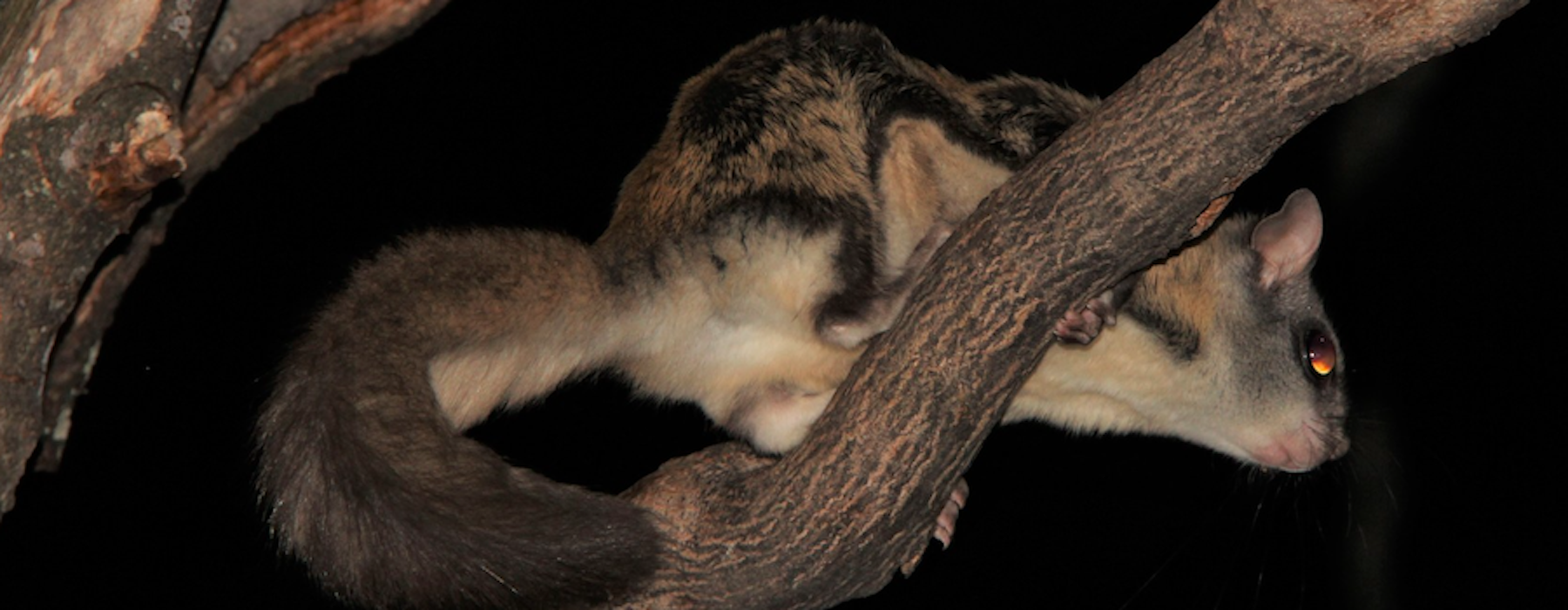Taxonomy
Order Rodentia
Family Sciuridae
Basic Description
Northern flying squirrels are identified by the furred flap of skin called the patagium stretching from their arms to legs on each side of their body. Dorsal fur is light tan, gray or dark red-brown, and belly fur is gray with white tips. It has a very long, flat tail, which is fur-covered and consists of 80% of its length. Very large black eyes. The northern flying squirrel can be distinguished from the southern flying squirrel by its larger size and its belly fur that consists of gray coloration.
Total Length: 275-342 mm.
Mass: 75-140 g
Habitat
The best habitat for northern flying squirrels is coniferous forests but they can also be found in coniferous/deciduous forests.They need to be able to make nests in crevices 1-18 meters off of the ground.
Vermont Range
The northern flying squirrel likely lives throughout the entire state, however little is known about their habitats here in Vermont. Their coniferous wooded habitats are found mainly in the Champlain Valley, Northern Green Mountains, Northern VT Piedmont, Northeastern Highlands and Southern VT Piedmont.
Diet
Type: Omnivore
Northern flying squirrels get a large portion of their diet from lichens and fungus. Since these are available year round, they are said to not store food over the winter. They also eat nuts, seeds and occasionally insects and bird eggs. They will lick up tree sap as well.
Reproduction
Breeding occurs only once in late spring. After a gestation period of 37-42 days, a litter of 2-4 young are born in the summer. Young are weaned after 2 months and will remain with their mother for another month. Sexual maturity is reached when they are a year old. Life expectancy is less than 4 years.
Conservation Status
- Vermont: S4 (Apparently Secure)
- Global: G5 (Secure)
- IUCN Red List: Least Concern
More Information
Vermont Distribution
Banner Image: Photo 90974949, (c) birderbb, some rights reserved (CC BY-NC) / Cropped from original







